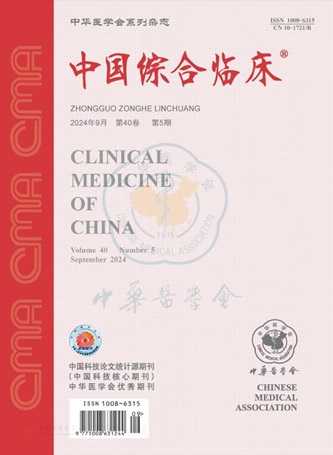Analysis of the quality of life and its influencing factors in children after transplantation of hematopoietic stem cells in children
引用次数: 0
Abstract
Objective To explore the related factors affecting the quality of life of children undergoing hematopoietic stem cell transplantation. Methods A total of 42 children (transplantation group) who received hematopoietic stem cell transplantation successfully from February 2010 to January 2017 in Beijing Children′s Hospital were investigated with the Chinese version of the Universal Core Questionnaire for Quality of Life for Children 4.0.40 healthy children matched with their age and sex were selected as healthy control group by 1: 1 matching method.To compare the quality of life between the two groups and to analyze the factors influencing the quality of life after hematopoietic stem cell transplantation. Results The age of transplantation group was (10.32±3.94) years, and the average time after transplantation was (2.76±1.15) years.The body weight and school attendance of transplantation group were lower than those of healthy group (P 0.05). Regression analysis showed that chronic graft-versus-host disease was the only factor related to quality of life (P=0.030). Conclusion The quality of life of transplant survivors is similar to that of healthy children of the same age, and the existence of chronic graft-versus-host disease is related to the overall poor quality of life. Key words: Children; Hematopoietic stem cell transplantation; Quality of life; Chronic graft-versus-host disease儿童造血干细胞移植后生活质量及其影响因素分析
目的探讨影响造血干细胞移植患儿生活质量的相关因素。方法对2010年2月至2017年1月在北京儿童医院成功接受造血干细胞移植的42名儿童(移植组)采用中文版儿童生活质量通用核心问卷进行调查1:1匹配方法。比较两组患者的生活质量,分析影响造血干细胞移植后生活质量的因素。结果移植组年龄为(10.32±3.94)岁,平均移植后时间为(2.76±1.15)年。移植组的体重和出勤率均低于健康组(P 0.05)。回归分析表明,慢性移植物抗宿主病是影响生活质量的唯一因素(P=0.030)。结论移植幸存者的生活质量与同龄健康儿童相似,而慢性移植物抗宿主病的存在与整体生活质量差有关。关键词:儿童;造血干细胞移植;生活质量;慢性移植物抗宿主病
本文章由计算机程序翻译,如有差异,请以英文原文为准。
求助全文
约1分钟内获得全文
求助全文
来源期刊
CiteScore
0.10
自引率
0.00%
发文量
16855
期刊介绍:
Clinical Medicine of China is an academic journal organized by the Chinese Medical Association (CMA), which mainly publishes original research papers, reviews and commentaries in the field.
Clinical Medicine of China is a source journal of Peking University (2000 and 2004 editions), a core journal of Chinese science and technology, an academic journal of RCCSE China Core (Extended Edition), and has been published in Chemical Abstracts of the United States (CA), Abstracts Journal of Russia (AJ), Chinese Core Journals (Selection) Database, Chinese Science and Technology Materials Directory, Wanfang Database, China Academic Journal Database, JST Japan Science and Technology Agency Database (Japanese) (2018) and other databases.

 求助内容:
求助内容: 应助结果提醒方式:
应助结果提醒方式:


